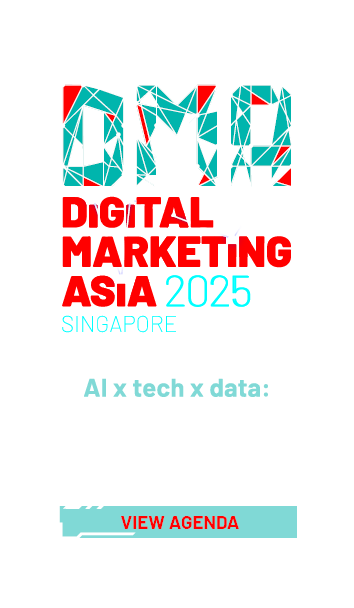



The colours of travel marketing
share on
Planning a trip is too hard? There’s just too many processes? Know someone who doesn’t like to travel? Well, let them meet Joanna Liao, chief marketing officer of SOTA Travel, and they will surely be tooting to a different tune.
An avid traveller with worldwide destinations under her belt, she was approached by SOTA Travel nearly four years ago to head up the marketing department of the online portal.
SOTA, originally an acronym for “Standard Online Travel Architect” and later rebranded to stand for “Smart Online Travel Assistance” is a budding online portal that provides travel packages – from the flights to hotels to activities and even food and beverages recommendations – on its microsite: SOTA.travel.
“I started in the marketing department at Cathay Airlines. From there I moved to the company’s loyalty programme and consultancy, situated in Hong Kong. When I moved back to Malaysia, I started with agencies, mainly focusing on direct marketing. Then a few years ago, my current boss headhunted me and pitched this idea of building a Malaysia travel brand to infiltrate the global market.”
Liao says it was such an exciting pull and to see the brand become what it is now, it was worth the switch.
SOTA.travel started out without a marketing department. Its successful infiltration into the consumer market owes credit to the company’s rebranding two years ago – changing the image from a tech-oriented software to a user-friendly and responsive medium.
“The company didn’t have a marketing person to start with, only a public relations person whose priority was lobbying the ministry and government. We went through a rebrand to build the brand and give it a personality. Now people know us as the online travel assistance. We gave it life,” Liao says.
In 2013, SOTA.travel aimed to bring the concept of a physical consumer travel fair to the virtual platform – encompassing travel booths, travel agents, hoteliers and airlines. Each campaign the brand ran spanned within 7-10 days, including online auctions of packages such as theme park tickets that would start at RM10 and proceed on a 24-hour schedule. Air tickets have also been auctioned.
“In a physical fair, you’d brave the jams and find parking only to queue in line to attend and search for deals. What we’ve done, in the form of a mobile app and website, is allow people to skip the hassle and browse at their convenience.”
The last campaign that commenced generated more than 70,000, which is slightly shy from the claimed attendance record at the Matta Fair.
“The highest traffic when people browse for things they want is at night. You can’t expect your consumers to abide by your operating hours, you need to be open 24 hours, seven days a week.”
SOTA.travel positions its online offers mainly for the younger generation – the group of individuals that spend a majority of their time on mobile devices, tablets or computers. Liao explains that while there are still people who prefer the physical contact of an agent and the tangibility of a leaflet, that culture is shifting towards the digital field.
“You’d think a mature person in their 40s or 50s won’t be that tech-savvy. You’re wrong. If I were to give my mum a smartphone, perhaps she may only use some of its functions, you are open to arguing whether she really needs a smartphone. She does – even if it’s just an older version of the latest technology, she needs it.”
Liao is no stranger to the digital influence with consumers, believing the key element is making your technology simple and intuitive enough to not only attract the younger generation, but to fulfil the needs of the older crowd.
Liao says she has been in the travel industry for nine years and has always been intrigued by technology.
“I was already involved in database, different operating systems and data mining tools with agencies. Of course, mobile was the next big explosion.”
However, this acquired knowledge didn’t come without effort. Liao referred to herself as a “dinosaur” when she first started with SOTA. “I used my phone for voice calls and SMS. All my colleagues were talking about these gadgets, basically the programming language and I was in no way techy in comparison. I had no clue about the social network and how it was changing the world. Now, thinking about it, 80% of my staff are under the age of 30.”
She chuckles and explains the youth of today are an interesting bunch – with their own culture, upbringing and styles in management – adding they are just “more vocal”.
NO WALK IN THE PARK
Despite the weather and having Liao continue her photo shoot as it poured at the Lake Gardens, she makes clear that marketing today is not for the light-hearted.
Liao shares with A+M that SOTA was built on an entire new concept, with its basis and operation stemming from greater Malaysia, which was the very disadvantage that it faced when marketing to more mature markets.
“The acceptance level is slow. The software is Malaysian; people don’t really believe that technology could come from Malaysia. Mature markets such as Singapore views us as an inferior developer, not actually looking highly on Malaysian-made products, especially in the category of technology. It’s a perception matter.”
That’s why during its rebranding, SOTA shifted its focus to emerging markets such as Vietnam, Cambodia, Myanmar, the Philippines, Laos and Indonesia. The marketing plan is to expand beyond Malaysia and take over the Southeast Asia travel market, all the while staying true to its original purpose: to be a first-class global brand in travel technology.
“It’s a Malaysian grown product; the owners, developers and staff are Malaysians. This is our chance to show the world that Malaysia is, in fact, capable of developing something world-class.”
LANGUAGES AND REGIONAL DIFFERENCES
The moment you cross the border into a new territory, the two obstacles you face as a traveller are language and cultural differences. For a travel-based brand, those two struggles top the list of concerns. "If you look at how the travel industry works, you’d find that each enterprise is very individualistic. They operate on their own system and separate from partners. Travel agents are even more archaic. Theme parks are even more off the grid; they have their own booking engines. Everyone is operating on a different language.”
Liao is very specific when she says marketing in Malaysia is very tough.
“It is critical to consider the multiple languages that influence Malaysians. We have our English, Bahasa Malaysia and Chinese – and even when we talk about the Chinese language, we have to consider if the audiences’ native tongue is Mandarin or Cantonese.”
She says the challenges as a marketer are determining where to place the budget.“In every marketing campaign, the more languages we run, the more it costs. So when it comes to budgeting, our struggles are in thinking about the language to run in which area, and the most important factor – cost.”
The multifaceted culture and array of languages are what makes Malaysia unique, but that uniqueness has also made the market so much more complex.
“Communication is a huge factor. Next to it is the ever-changing trend with the emergence of mobile/digital platforms. You have to consider the different audiences and their behaviours. The traditional way of segmenting your consumers based on demographics is no longer limited to age, location, sex or income profile; the online world is anonymous.”
However, if a marketer understands the data provided by the virtual directly mirrors consumers’ real behaviour, they will be able to marry the differences.“Consumers are now ahead on the tech band wagon. They’ve got all these technologies and devices that they can now research anything they want at the click of a button. But the vendors and suppliers are still not fast enough to keep pace; they’re lagging behind. Believe it or not, hotels have only just started coming up with online availability and promotions. You can now pay and book online, but the hotels themselves aren’t actually e-commerce-ready.”
Any traveller will tell you the process to check into a room requires paperwork. Liao explains hoteliers still operate on a manual process, which lags for the industry when it comes to matching up to consumers’ expectations. When it comes to its international market – and SOTA has scaled down from its 1,400 agents to more than 800 agents servicing 46 countries – it realised its expansion ambitions had to be realistic.
“When we expanded too quickly, especially in different countries with different languages, we weren’t able to provide a full support staff or service agents those locations required.”
Liao’s word of advice to marketers is to look at the Asian market with curiosity and to constantly learn. She points out the US and European mobile trend has come to a halt while Asia is increasing its usage and reliance on the technology.
We can’t do everything in every market; that’s why we scaled down to just Asia – where we are able to gauge user-ability and track our impact.”
THE COLOURS OF A FULL LIFE
Liao humbles her life experiences and all the wonders she has been afforded to her good fortune, saying that in every single industry and company she’s been with, they’ve been able to contribute to her overall growth and wellbeing.
“I was a stewardess for Cathay Airlines for three years. Getting to travel for free and being paid handsomely for doing it as well was a blessing. However, three years was my limit and assimilating back to a full-time job took some time.” Liao says although she loves travelling, she also realises the hype is short-lived.
She also shares that her most embarrassing and awkward encounter in life happened on an airline where two passengers – hours prior who were strangers to each other – suddenly engaged in some inappropriate activities on a flight, accompanied by some disturbing sounds from under a thin layer of in-flight blankets.
She ends with all seriousness that marketing is colourful. But for it to maintain its colour, one must learn to always ask questions and challenge the norm.
“Always ask yourself what you can do better or different.”
share on
Free newsletter
Get the daily lowdown on Asia's top marketing stories.
We break down the big and messy topics of the day so you're updated on the most important developments in Asia's marketing development – for free.
subscribe now open in new window
